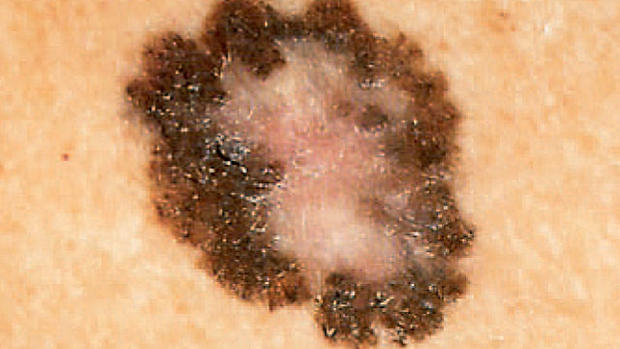Study: Increased risk for young people and skin cancer
(CBS News) May is National Skin Cancer Awareness Month, and it's important that everyone understand the risks. This disease not only impacts adults but surprisingly research is finding more and more young people are being diagnosed with skin cancer.
Doctors at the Mayo Clinic report a sharp increase in skin cancer, specifically melanoma, among people in their teens and 20s.
The researchers believe that in order to prevent these statistics from rising more, awareness of how to prevent skin cancer should start at an early age, so they created a public service announcement geared toward children.
"There is an astonishing increase in melanoma amongst young people, eight-fold increase, the doctors' research shows, in young women and four-fold for the young men," said Dr. James Levine. Levine, a professor of medicine at the Mayo Clinic, narrates the television spot and is a melanoma survivor.
Research shows that the lifetime risk of melanoma is higher in males than in females, but the opposite is true in young adults and adolescents. Women are more susceptible, partially in part to more tanning-bed exposure. In fact, each sunburn or tan raises these rates and the risk of melanoma doubles when a person has just five sunburns at any point in their life.
However, this is a preventable cancer, and there any many things people can do to lessen their sun exposure. Levine suggests wearing sunscreen everyday and making sure it prevents against both UVA and UVB rays.
He also said the number-one thing people forget is they need to apply the lotion at least 30 minutes before going out in the sun; otherwise you will burn because it does not start working right away.
Tanning bed ban: N.J. bars anyone under 17
Also, you need to be conscious of your own skin and make sure to go to a doctor when you notice any changes. Skin cancer is the most common form of cancer in the United States, so it's important to be aware of changes on your body. Levine suggests attaching an abnormal mole characteristic to the letters A, B, C, D and E to remember what to look for.
"The A is the asymmetry, if one half of the mole looks different to the other half of the mole. The B is if the border is irregular, that's worrisome. C, if it's more than one color, that needs to be checked. D is the diameter, and this is simple, if it's bigger than an eraser head, get it checked, and E is the evolution, so if it is changing or getting higher, deeper, it needs to be checked," he said. "And the bottom line is, and I assure you from personal experience, is it's easier to get it checked early than watch it and say well perhaps it will get better. It needs to be checked."
For Dr. James Levine's full interview, watch the video in the player above.
